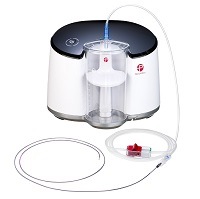
Penumbra today announced initial INSIGHT registry data showing that its RED reperfusion catheters were successful in removing all clot types—and, additionally, results of sub-analyses from the company’s COMPLETE study indicated the Penumbra system’s effectiveness for acute ischaemic stroke patients with tandem lesions, as well as patients who are considered in the late window of treatment.
These results were presented at the 16th congress of the World Federation of Interventional and Therapeutic Neuroradiology (WFITN 2022; 21–25 August, Kyoto, Japan), according to a Penumbra press release.
Initial data from the INSIGHT registry—a multicentre, postmarket evaluation of Penumbra’s latest RED reperfusion catheters in 161 acute ischaemic stroke patients—showed 68.9% had successful first-pass revascularisation (modified Thrombolysis in cerebral infarction [mTICI] ≥2b–3), and 97% had successful revascularisation after final angiogram through site reported findings. Final mTICI ≥2b–3 scores were reported in 98.1% of patients with firm red clots and in 100% of patients with other clot types.
“The initial data from our INSIGHT registry are very promising,” said Sandra Lesenfants, president of interventional at Penumbra. “With such a high first-pass rate, Penumbra’s RED catheters can restore blood flow much quicker, which we know can lead to improved outcomes for patients. Penumbra’s focus has always been to help as many people as we can and the latest data demonstrate that our latest technology is indeed making a positive impact.”
The second of two recent data releases from Penumbra at WFITN 2022 centred around COMPLETE—a global, prospective, multicentre, postmarket study assessing the performance of the Penumbra system. As per a company press release, core lab adjudicated findings include:
- Patients with anterior circulation tandem lesions with stenosis greater than 50% treated with the Penumbra system resulted in successful revascularisation, as 89% of patients achieved mTICI 2b–3 and nearly 64% of patients achieved 90-day modified Rankin Scale (mRS) 0–2.
- Late-window patients achieved successful revascularisation with the use of the Penumbra system in 83.2% of cases, with a 90-day good functional outcome rate of 55.4%. Additionally, there were no device-related adverse events observed.
“Mechanical aspiration thrombectomy is becoming an increasingly important option for physicians treating acute ischaemic stroke, especially patients with more complicated cases,” said Osama Zaidat (Mercy Health, Toledo, USA), the national principal investigator of the COMPLETE study. “Oftentimes, patients that presented late or have tandem lesions (15% of mechanical thrombectomy cases) are difficult to treat. However, the data showed the Penumbra system delivered good functional outcomes and low 90-day mortality rates for these patients, which compared favourably to other options.”













